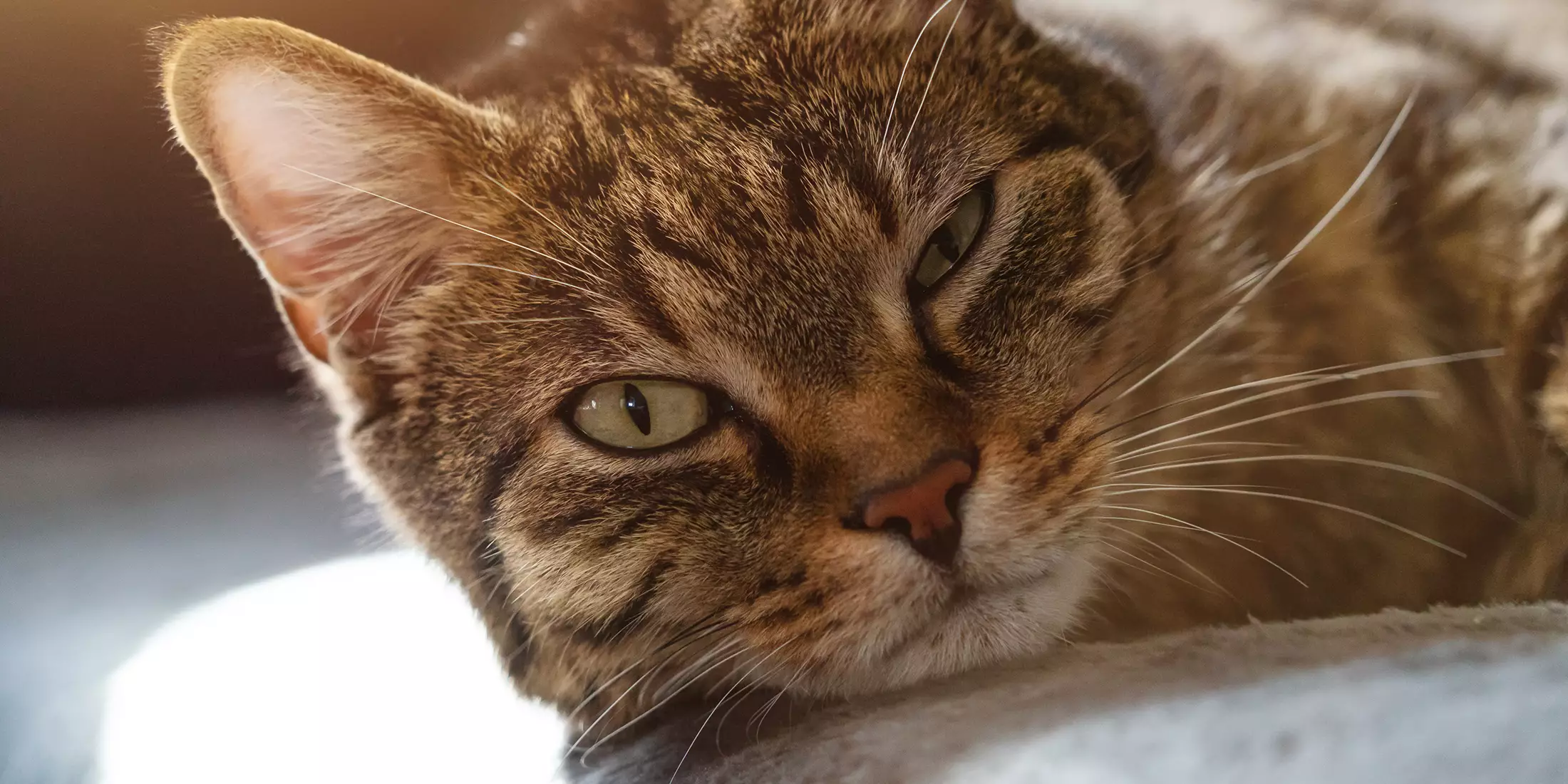Upper Respiratory Tract Infection in Cats
Contents of Article
Respiratory tract infection in cats – also called cat flu or feline viral respiratory disease complex – affects their upper airway. Respiratory infections aren’t too uncommon in cats. The nose, mouth, throat, nose, and sinus, which are a part of the upper respiratory tract, are prone to bacterial and viral pathogens.
Secretions from eyes or nose of an infected kitty transmits to other cats during playing activities, hissing, sneezing, coughing, grooming, or spitting. There is a risk of transmission of disease if the infected cat naps together with a healthy cat in the same shelter causing upper respiratory tract infection.
Not only this, viral or bacterial secretions can be transmitted on food bowls and toys. Touching an infected cat and then using the same hands to touch another kitty could also spread the virus to an uninfected feline.
Upper Respiratory Tract Infection in Cats: Causes
Respiratory infections are common in kittens as is the case with urinary tract infections. However, cats kept in crowded quarters are at a high risk of infection, as bacteria travels easily from direct or indirect contact.
Healthy cats can become infected through direct or indirect contact with a sick kitty, contaminated food or water bowls and litter boxes.
Viruses are the most common cause of feline upper respiratory tract infections. A vast majority of these infections are associated with feline herpesvirus and calicivirus, which are highly contagious and spread from direct contact with nasal, ocular, or oral secretions. In rare cases, other microorganisms may cause an upper respiratory tract infection in cats, such as feline reovirus, Bordetella bronchiseptica, or mycoplasmas.
Viruses may spread from one cat to another through food sharing, sneezing, or coughing. Unfortunately, once these viral pathogens infiltrate the kitty’s body, they are difficult to get rid of. Your kitty may become a carrier of these infectious agents for life and fall sick again and again, especially in times of stress.
Bacterial or viral microorganisms may survive for a month in the cat litter or secretions. Additionally, there is a high risk of transmission of these viruses from a viral-positive kitty to a viral-free cat.
Chlamydia and Bordetella are some of the common bacterial pathogens infecting cats.
Signs of Upper Respiratory Tract Infection in Cats
Since a respiratory infection involves nose, eyes, mouth, and sinus of a kitty, some common symptoms include
- Nasal stuffiness
- Runny nose
- Eye discharge
- Lethargy
- Watery eyes
- Sneezing
- Difficulty breathing
- Coughing
- Pneumonia in extreme cases
- Conjunctivitis
- Lack of appetite
- Fever
Discharge from the nose or eyes may be clear or cloudy with pus. Some viral infections of the upper tract may cause ulcers in the kitty’s mouth. In some cases, the kitty may have a blocked nose and experience difficulty breathing and smelling food. As a result, some cats quit eating, since they can’t smell food, which may prove fatal and they may starve to death.
Upper Respiratory Tract Infection in Cats: Diagnosis
It’s important to determine the cause of infection. A veterinarian does a detailed diagnosis to identify the real cause of infection, because symptoms of asthma, fungal infections, and serious illnesses are prone to misdiagnosis for being identical to those of a respiratory tract infection.
A sample of the eye discharge is taken for culture of the fluid to determine the cause of the illness. The vet may do an X-ray of the kitty’s lungs to check the presence of fluid if there are symptoms of pneumonia.
- A polymerase chain reaction (PCR) test helps to diagnose the presence of feline upper respiratory viruses.
- A brief exam will help determine if your kitty requires medication. The vet can check to see if the cat is dehydrated.
- A complete blood count also assists in ruling out any blood-related disorders.
- The vet may perform lab tests to evaluate the functioning of other vital organs, including liver, kidney, and pancreas.
- Urine tests are an effective way to check for signs of urinary tract infection.
- Electrolyte tests are done to determine if there are signs of dehydration or electrolyte imbalance.
- Tests are done to check for viral infections, including feline leukemia virus and immunodeficiency virus.
Chronic upper respiratory infections require additional tests, such as radiographs to evaluate the lungs and sinuses, cultures of cells, and microscopic evaluation of discharge.
Upper Respiratory Tract Infection in Cats: Treatment
Self-diagnosis is not the best way to treat a diseased kitty, since your furry feline may require additional veterinary care and antibiotic therapy.
Any delay in diagnosis or treatment of some upper respiratory infections may result in the progression of symptoms to pneumonia. It may have serious complications for the cat, resulting in chronic breathing problems, blindness, or even death due to starvation.
Regular veterinary exams can help catch the infection symptoms early. A healthy immune system is your kitty’s best defense against respiratory infection. It is therefore important to ensure good hygiene, especially when handling multiple cats.
If your kitty is diagnosed with a feline upper respiratory tract infection, isolate her from other pets. Keep your feline friend indoors to reduce the risk of exposure to infected animals. Take special precautions while traveling.
Treatment depends on the severity of symptoms. The vet may prescribe antibiotic therapy for severe infections and your kitty may require hospitalization.
For mild cases, they may suggest an increase in humidity within your home so your cat can breathe easy. It may help to offer appetizing food that smells better and encourage eating. Maintain hygiene and keep the eyes and nose clear of discharge.







